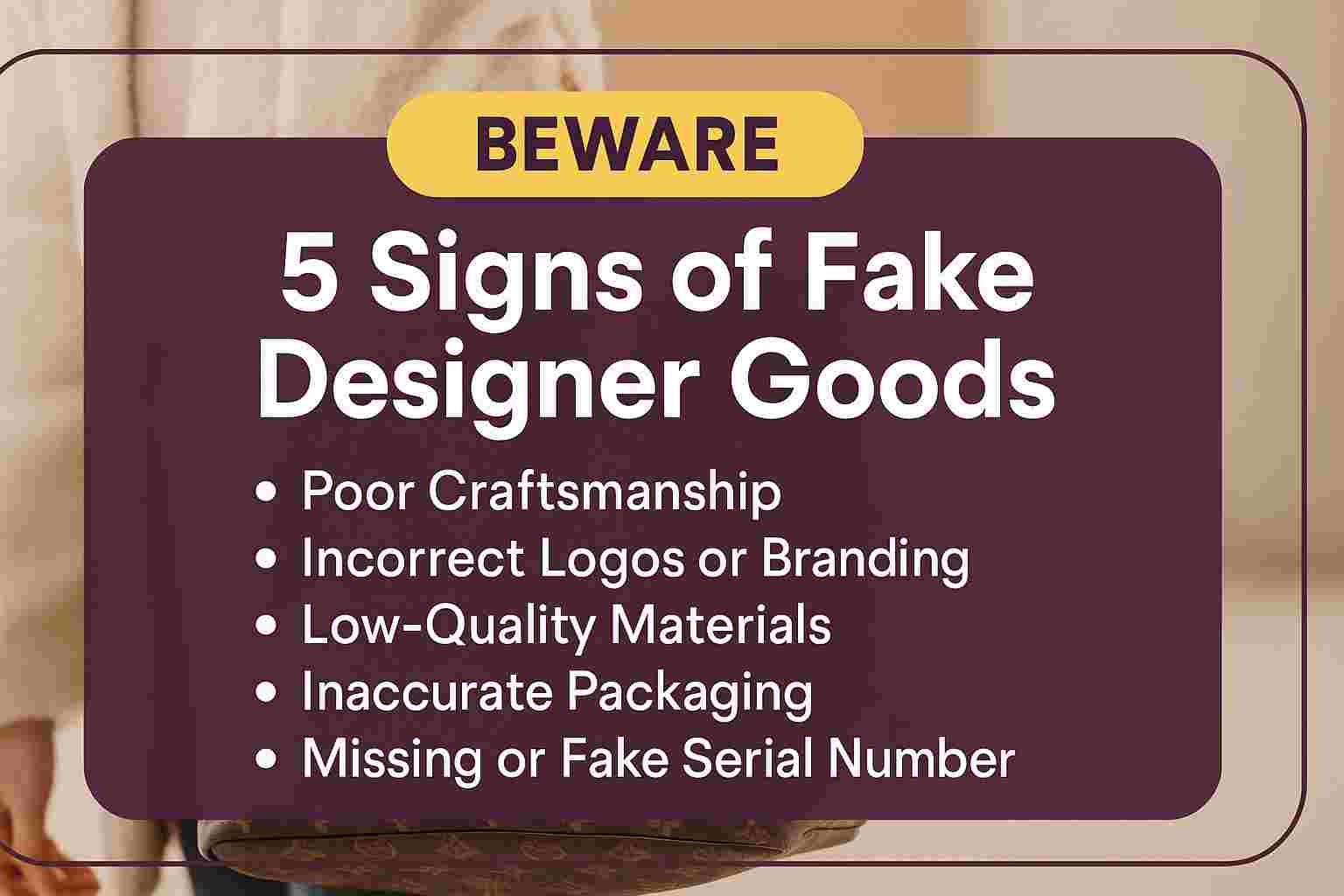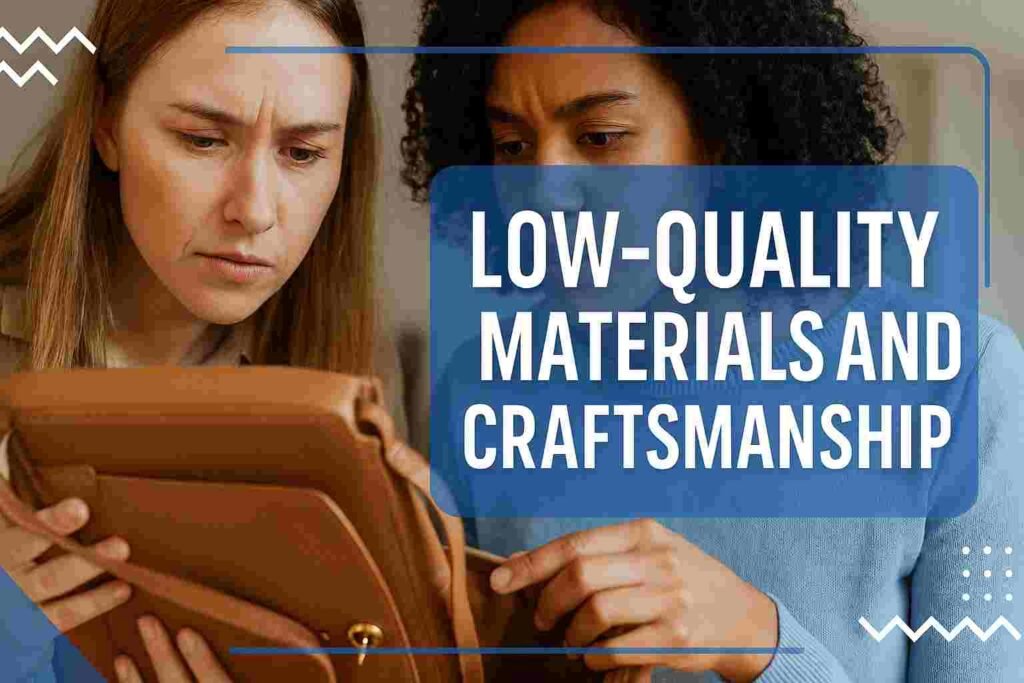Physical Address
304 North Cardinal St.
Dorchester Center, MA 02124
Physical Address
304 North Cardinal St.
Dorchester Center, MA 02124

You’ve found what looks like a stunning deal online—a Chanel bag, Gucci belt, or pair of Louboutins at half the usual price. You feel tempted, even excited. But before you click “Buy,” stop. Because what seems like a bargain could be a sophisticated Signs of Fake Designer Goods—and falling for one isn’t just embarrassing. It’s costly, damaging, and surprisingly easy to do.
In a global luxury market valued at over $350 billion, counterfeit goods now account for an estimated 60% of all luxury items sold online, according to the Organisation for Economic Co-operation and Development (OECD). Spotting fake designer items has become a necessary skill, not just for collectors, but for anyone who values authenticity, ethics, and quality.
In this guide, we’ll uncover the 5 most telling signs of fake designer goods. From stitching flaws to packaging giveaways, you’ll learn how to shop smarter, avoid scams, and protect your fashion investment.
Counterfeits aren’t just about poor quality or unethical labor—they can pose real legal and safety issues.
The U.S. Customs and Border Protection warns that counterfeit goods are linked to illegal trafficking networks and often violate labor and safety standards. Choosing the real thing isn’t just smart—it’s responsible.

A $3,000 Louis Vuitton bag listed for $300? Red flag.

Designer pieces are crafted with extreme attention to detail. Fakes often miss the mark.
Genuine designer bags like Hermès or Chanel undergo rigorous inspection. If you notice any corner cutting, you’re likely holding a fake.

One of the fastest giveaways of fake designer goods is incorrect typography.
Compare your item with official product photos from the brand’s website. Any difference in logo spacing or shape is a red flag.
Luxury items often come with documentation. If it’s missing or flawed, be cautious.
How the product is sold can tell you as much as the product itself.
| Category | Authentic Designer Goods | Counterfeit Goods |
|---|---|---|
| Price | Reflects market or brand MSRP | Often too cheap or suspiciously discounted |
| Materials | High-quality leather, hardware, stitching | Flimsy, uneven, or synthetic alternatives |
| Logos | Perfect font, size, spacing | Off-center, wrong font, or misspelled |
| Packaging | Includes box, dust bag, authentication | Generic or missing accessories |
| Seller | Professional, verified, with policies | Anonymous, vague, or evasive |
Are all designer deals online scams?
No, but you must verify the seller, platform, and product details. If something looks suspicious, proceed with caution.
What’s the best way to authenticate designer goods?
Use apps like Entrupy or services like Real Authentication for fast, professional evaluation.
Can I get my money back if I bought a fake?
If you paid via PayPal or a credit card, you may be able to file a claim. Most social platforms offer no buyer protection.
What if I unknowingly wear a fake?
There’s no legal penalty for owning a counterfeit for personal use, but reputation matters—especially in fashion circles.
Fake designer goods might look appealing on the surface, but they’re rarely worth the risk. Poor quality, ethical concerns, and lack of resale value should be enough to steer you away. By learning how to spot fakes, you’re not only protecting your wallet—you’re supporting craftsmanship, creativity, and integrity.
Now that you know the 5 signs of fake designer goods, you can shop with confidence and credibility.
Enjoyed this article? Share it with a fashion-conscious friend and explore more luxury tips on our blog.